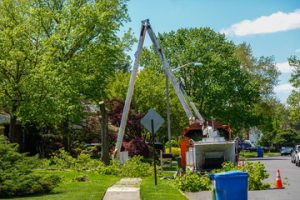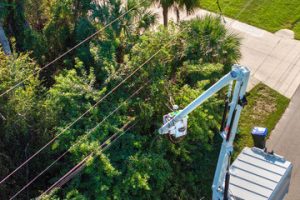Trees shape our landscapes in ways we rarely notice. They anchor soil, shade homes, and offer habitats to countless species. Yet there are times when their presence shifts from blessing to burden. And when that happens, tree removal becomes not just a choice but a necessity.

The act of removing a tree is often misunderstood. Many see it only as the final blow to a once-living thing. But in reality, the process involves science, safety, and sustainability woven together. It is about balance, not destruction, and about ensuring that ecosystems and human spaces coexist without harm.
Modern tree removal is no longer just cutting and clearing. It has evolved into a complex field blending arboriculture, engineering, and environmental science. Each decision to remove a tree now follows a thorough evaluation of risk, health, and ecological impact. This approach ensures that every action is intentional and responsible.
One of the main reasons trees must be removed is safety. A large tree near a structure may seem harmless until a storm arrives. Heavy winds or saturated soil can make weakened roots fail, turning the tree into a hazard. In such situations, proactive removal prevents accidents and costly damage.
Disease is another silent force behind many removals. Fungal infections, insect infestations, or internal decay can spread unnoticed. A tree that appears healthy on the outside may be hollow within, waiting to collapse. By removing such trees, arborists prevent the spread of pathogens and protect surrounding vegetation.
Urban expansion also plays a significant role in the need for removal. As cities grow and infrastructure demands increase, space becomes a premium. Old root systems can interfere with foundations, utilities, and roads. Tree removal in these scenarios allows for development while encouraging replanting in more suitable areas.
Technological advancements have transformed how removals are done. Gone are the days of simple chainsaws and guesswork. Today, drones assess canopy health, sensors detect structural weaknesses, and cranes lift sections with precision. This reduces risk for workers and minimizes disruption to the surrounding environment.
Environmental responsibility is now at the core of the process. Professionals plan removals with biodiversity in mind, ensuring that animal habitats are relocated or replaced. Some projects even integrate reforestation as part of their removal plans. This balance allows nature to recover and evolve alongside human needs.
Tree removal is not always a sign of neglect or carelessness. In many cases, it is part of a broader ecosystem management plan. Removing one tree might save an entire grove from disease. Clearing old growth could open space for young, resilient species to thrive. Every cut can serve a larger purpose.
The timing of removal is critical and often underestimated. Removing a tree during dormancy can reduce stress on nearby plants and minimize soil disruption. Seasonal planning also ensures better chances for replanting and ecological recovery. Timing decisions can mean the difference between ecological harm and harmony.
Roots often present challenges long after a tree is gone. They can continue to grow, damage underground systems, or even sprout new shoots. Advanced removal techniques address this by excavating or treating root systems to prevent future issues. This hidden step is essential to truly resolving the risks associated with tree removal.
Safety standards in the industry have also evolved dramatically. Strict protocols guide how teams assess hazards, set up work zones, and execute cuts. Protective gear, rigging systems, and emergency procedures are all part of modern practice. These precautions ensure that both property and people remain safe throughout the process.
The decision to remove a heritage or ancient tree is one of the most complex challenges. Such trees often hold historical, cultural, or ecological value. Removing them requires collaboration between experts, communities, and environmental agencies. In many cases, creative solutions are explored to preserve the legacy while addressing safety.
Climate change is influencing removal decisions too. Shifts in weather patterns, stronger storms, and changing soil conditions alter how trees grow and decline. What was once considered a healthy lifespan may now be shortened by stress factors. Tree removal planning must adapt to these evolving realities.
Public perception often complicates removal projects. People can feel emotionally connected to certain trees, making their removal controversial. Open communication, clear explanations, and community involvement are essential. Transparency transforms opposition into understanding and fosters support for responsible management.
Economic considerations also shape decisions. While tree removal can be costly, neglecting a dangerous tree can result in far greater expenses. Insurance claims, property repairs, and legal liabilities far outweigh proactive removal. Understanding the long-term financial picture is a crucial part of the decision-making process.
Urban planners are now integrating tree removal into broader green infrastructure strategies. Instead of seeing it as a loss, they view it as a phase in landscape evolution. Removed trees are replaced strategically to create stronger, healthier canopies. This long-term vision ensures that cities remain both safe and green.
Waste from removed trees is no longer treated as mere debris. Wood chips become mulch, logs are repurposed for construction, and even sawdust finds industrial use. Recycling the byproducts of removal reduces waste and adds value. It transforms what was once discarded into a sustainable resource.
The concept of selective removal is gaining traction in forest management. Instead of clear-cutting, specific trees are removed to encourage biodiversity and prevent overcrowding. This technique mimics natural ecological cycles and strengthens overall forest health. It is a reminder that removal can also mean renewal.
Education and certification play vital roles in modern removal practices. Trained arborists understand tree biology, risk assessment, and environmental law. Their expertise ensures that every removal is justified, safe, and ecologically sound. As the industry professionalizes, the quality and integrity of services continue to rise.
Global discussions around tree removal are also changing. The focus is shifting from reactive cutting to proactive planning and prevention. Strategies like regular pruning, soil care, and disease monitoring reduce the need for full removal. This preventative mindset reflects a deeper respect for the life cycle of trees.
For property owners, understanding when and why to remove a tree is essential. Visual signs like leaning, cracking, or fungus growth can be early warnings. Consulting professionals before these issues escalate can prevent damage and ensure safety. Informed decisions protect both property and the environment.
The emotional aspect of tree removal should not be overlooked. Trees often hold memories, mark milestones, or define spaces. Removing them can feel like erasing a part of one’s history. Recognizing and honoring that emotional connection is an important part of the process.
Tree removal is also part of disaster response strategies. After storms, earthquakes, or fires, weakened trees pose immediate threats. Rapid assessment and removal help restore safety and support recovery efforts. In these cases, removal becomes a vital tool for rebuilding and resilience.
Looking ahead, the future of tree removal lies in integration with broader sustainability goals. As technology advances and awareness deepens, removal will become even more precise and thoughtful. Innovations like robotic climbers and AI-based risk assessment are already emerging. These tools promise a future where removal is safer, faster, and more environmentally conscious.
What remains constant is the need for balance. Every decision to remove a tree must weigh human safety, environmental health, and ecological continuity. It is a delicate equation with no one-size-fits-all answer. Yet when done correctly, removal becomes a bridge between progress and preservation.
In the end, tree removal is not about loss. It is about stewardship—about managing landscapes so that nature and humanity thrive together. It is about making space for growth, safety, and renewal. And it is about understanding that even in removal, there is life, purpose, and hope.
The silent giants that fall give way to new chapters in our shared story with nature. Their absence teaches us responsibility, foresight, and respect. And their legacy continues, not just in the roots that remain, but in the future they make possible.
Tree removal is more than a task—it is a reflection of our evolving relationship with the living world. It shows how we adapt, how we protect, and how we grow. It is both an end and a beginning, a farewell and an invitation to reimagine what comes next.
Even as the saws quiet and the stumps fade into the earth, the work is never truly finished. Nature continues its cycle, and so must we. And with each decision, we shape a landscape where safety, sustainability, and beauty can coexist in harmony.

